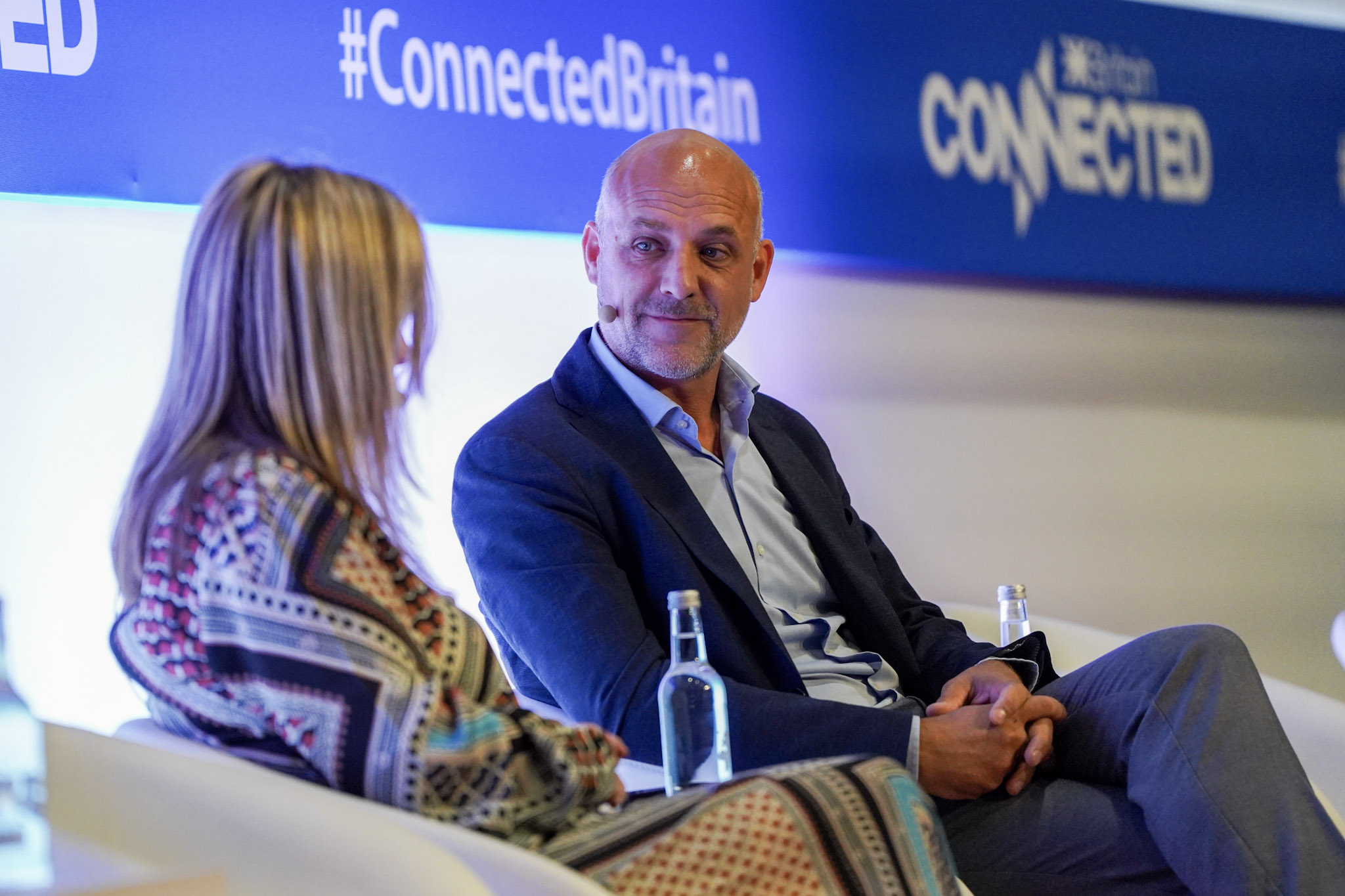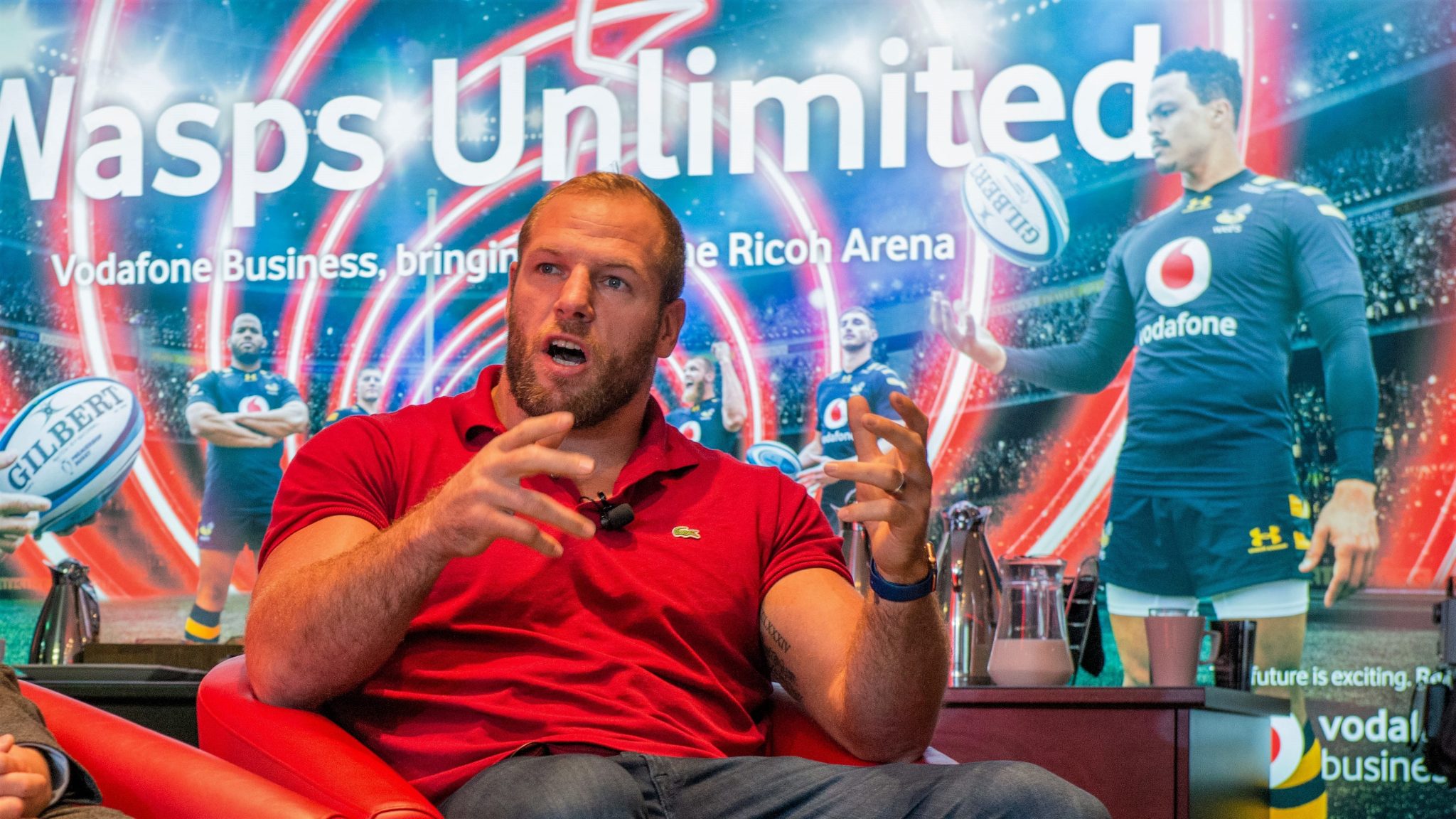
By Matt Wall, Head of Editorial & Content
James Haskell, former Wasps rugby player and back row for England, is the size of a mountain. Recently retired, he’s now decided to apply his 18-stone rock-hewn hulk to the Mixed Martial Arts fighting cage. I pity his opponents.
So it was with some trepidation that I gently ribbed him for missing his first attempt at a virtual reality drop goal at the official opening of the Vodafone Business Lounge in Coventry’s Ricoh Arena, home to the Wasps rugby and netball clubs.
“I was a back row, not a kicker,” he growled.
The VR drop goal game requires a sensor to be strapped around your kicking leg, two hand-held controllers to “catch” the ball with, and, of course, a VR headset. Over a 4G network, the latency – or delay – is such that very few manage to catch the ball. Over 5G, this latency practically disappears making catching the ball a cinch. The graphics are much sharper, too.
I managed to dropkick the virtual ball through the posts on my fourth attempt. Haskell wasn’t watching thankfully.
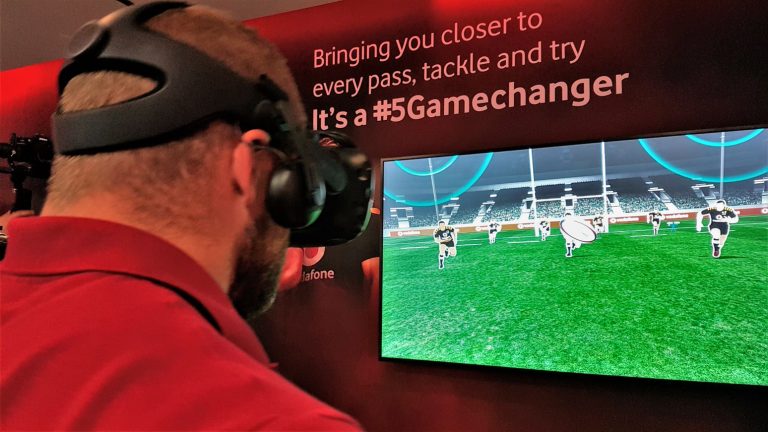
It’s just one example of how 5G could enhance the fan experience and provide new sources of revenue for the sports industry.
As a “technology keeno”, Haskell jokes that being able to download a film in 30 seconds and watch it wearing noise-cancelling headphones would have made coping with an annoying room-mate that much easier.
More seriously, consistently monitoring his sleep, hydration, nutrition, calorie consumption, blood sugar levels and fitness performance in a data-driven way would have “made me a better player”, he believes. These days he weighs his food and tracks every aspect of his nutrition and fitness.
According to Vodafone research, three quarters of business leaders from sports organisations believe improving fan engagement is key to future success, and that 5G will help them achieve that.
How?
Well, imagine being able to live stream games to your phone wherever you have a 5G signal, watch instant replays from an angle of your choice, or to be able to track your favourite player in real time, seeing their in-game performance stats appear on your screen instantaneously.
In future, you might be able to sit in your favourite armchair wearing a Tesla bodysuit and feel what it’s like to be on the receiving end of a crunching tackle – not my idea of fun, but it takes all sorts.
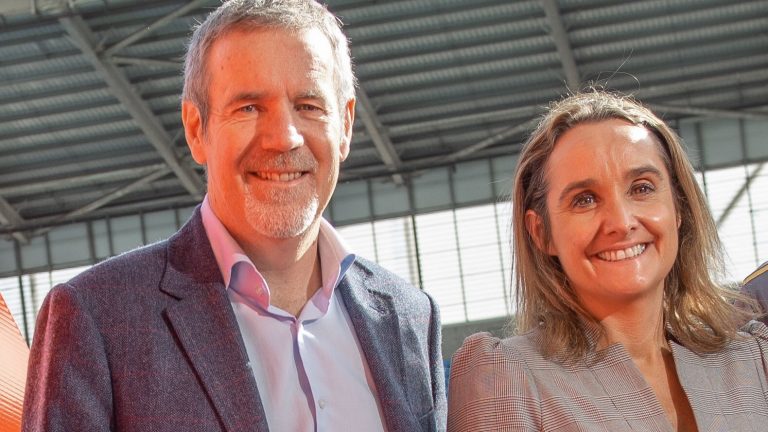
“We think that 5G will have a huge impact on the sports industry – it’s going to transform the way that we watch sport,” said Anne Sheehan, head of Vodafone Business in the UK.
Fans will be able to buy high-definition “immersive or virtual reality content”, she says, giving sports organisations new revenue streams.
Referring to Vodafone’s demonstration of the first holographic call over a 5G network in September 2018, Sheehan envisages similar technology giving fans exciting new experiences in future.
This is one reason why Vodafone has spent a chunky £2bn so far on developing and implementing its 5G network.
Wasps rugby and netball fans should look forward to enjoying the “best connected seats in the country”, she said.
There are also opportunities for technology to help “make the game [of rugby] more understandable for fans both in the stadium and at home on TV”, said Scott Petty, Vodafone UK’s chief technology officer.
“It’ll make people more aware of just how amazing these athletes are.”
Modern sport is a global business and clubs now have international fanbases, only a minority of whom will regularly get to see live games in a stadium. So interactive and immersive technologies will be crucial in involving these remote, but passionate, audiences and bringing them closer to the players and the action.
Many sports teams already use a range of sensors that their players wear, measuring speed, acceleration, ground covered, number of tackles made, and so on. They analyse all this data to monitor player fitness, effort, and to devise tailor-made training sessions.
High-speed mobile connectivity makes collecting and processing all this data faster and more efficient, so teams can get the very best out of their players and improve performance.
These days, half-time team talks will as often involve a laptop and data analytics as isotonic drinks and heated words from the coach.
Haskell points out that all this monitoring technology is only really useful if we know how to interpret the data properly – which wasn’t always the case, in his experience. Data doesn’t record players’ emotions, for example – a crucial aspect of sporting performance.
But most in the industry agree that technology – and 5G in particular – has the potential to transform sport, for clubs, players, fans and broadcasters alike.
Learn more about why UK businesses should choose Vodafone 5G.
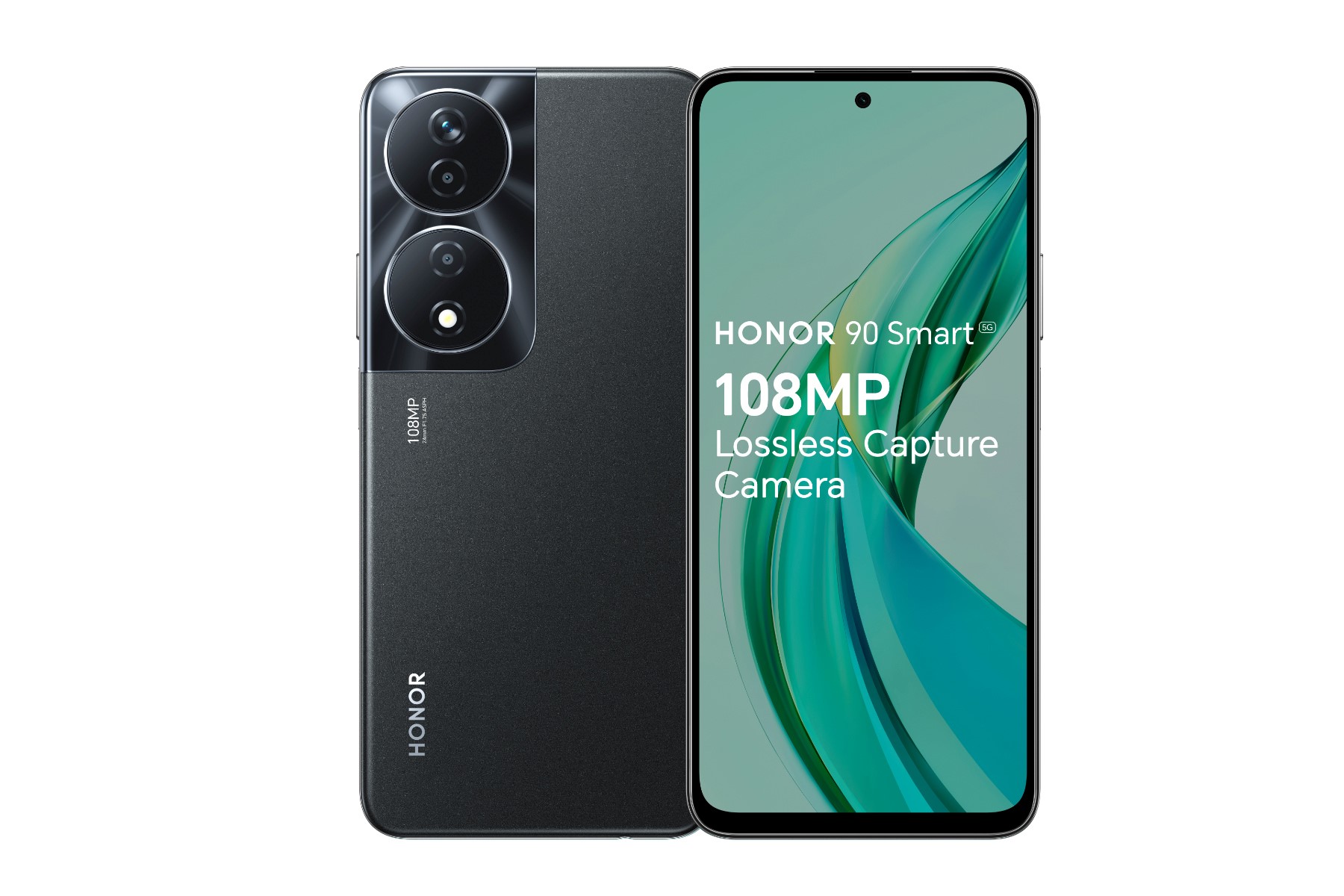

![pick and mix sweets assortment with scoops [Adobe Stock] stock photo of sweets at a pick and mix confectionary stand](https://www.vodafone.co.uk/newscentre/app/uploads/2024/02/pick-and-mix-sweets-assortment-with-scoops-Adobe-Stock.jpg)
